
Brushes in car wash
I’m a huge fan of abstract photography. That wasn’t always the case, however. As with most things one doesn’t understand, I didn’t see the point. But, experiencing an exhibit of abstract expressionist painters from New York piqued my interest. I saw abstract art in a new light.
These images are not meant to be understood, but felt.
In this post, I’ll explain the term “abstract” and why this type of photography can be fun and playful and, at the same time, help us become better photographers. I’ll show examples of my own work, and point to resources for you to learn more.
What is abstract photography?
John Suler, in his book on Photographic Psychology (free online), says that a photograph is abstract when you ask yourself, “What is it?” Ron Bigelow wrote a post on abstract photography, in which he defines an abstract image as:
- Not representing the subject in a literal way.
- Communicating primarily through form, color, and curves rather than image detail.
An image which includes people and other recognizable subjects creates a conceptual (thought-based) experience. The viewer immediately labels or names what they see in the scene. If the image evokes an emotional response, it may be because the scene has a particular meaning for them or they’re reacting to the visual elements – color, lines, textures, patterns – at a subconscious level. They create meaning – either what the image means to them or what they think the creator of the piece had in mind.
With abstract photography, these conceptual labels are not apparent and the viewing experience becomes very different, more visceral or perceptual. Not knowing “what it is” allows us to explore how the image makes us feel, without trying to figure it out.
Why should you create abstract photographs?
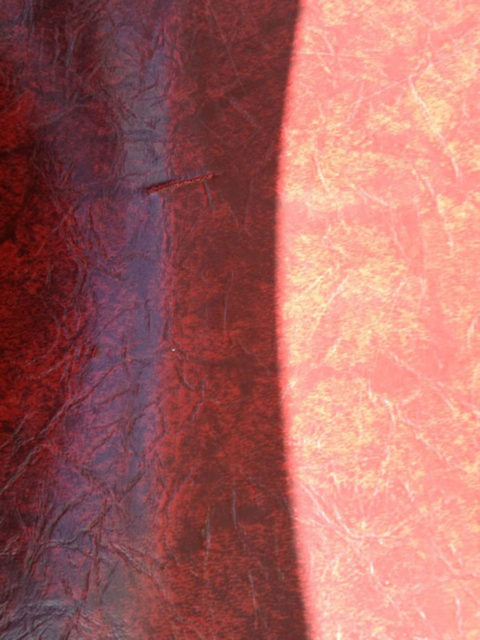
Chair seat in laundromat
1. Gives you practice in recognizing the elements of visual design and in composing.
2. You can explore the emotional aspects of colour, lines, shapes, and patterns.
3. Helps you to expand your perspectives and see in new ways.
4. Can help you to get out of a photographic rut.
5. It’s fun and freeing.
Seeing in Abstract
Abstract images can be found anywhere. I see them on the ground, in textures and patterns, graffiti, rust and buildings, in the sky and in water.
When you move in close, showing only part of a subject, you create an abstraction. However, it’s not absolutely necessary to move in close. In the three images below, I used long shutter speeds and camera movement to create blur. This disguises the conceptual subject matter and emphasizes color and movement.
Thanks to Freeman Patterson and Andre Gallant for my introduction to these ideas.

The series of images below are a few of my favourites and show the wide variety of subject matter available for discovering abstract images.
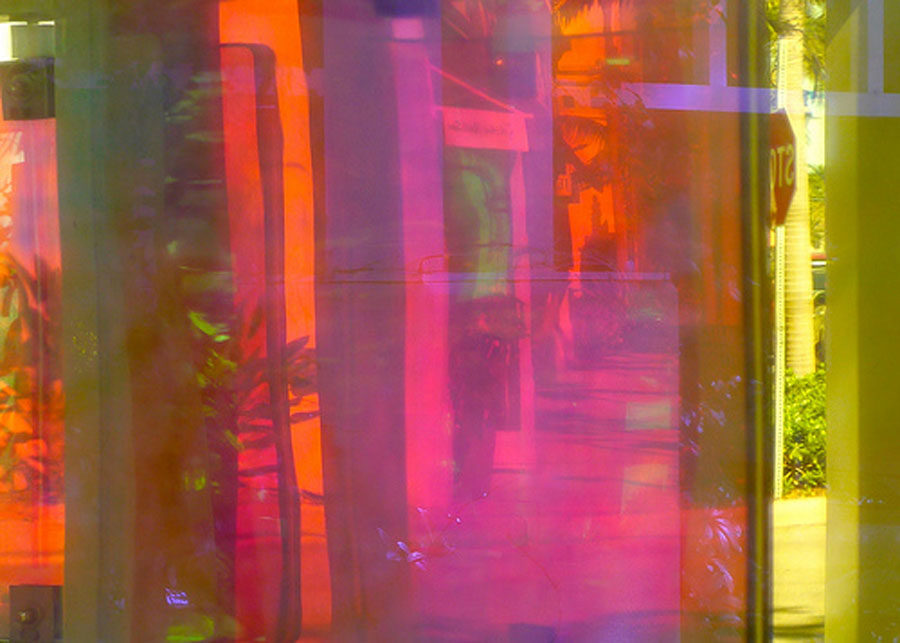
Reflections in Glass
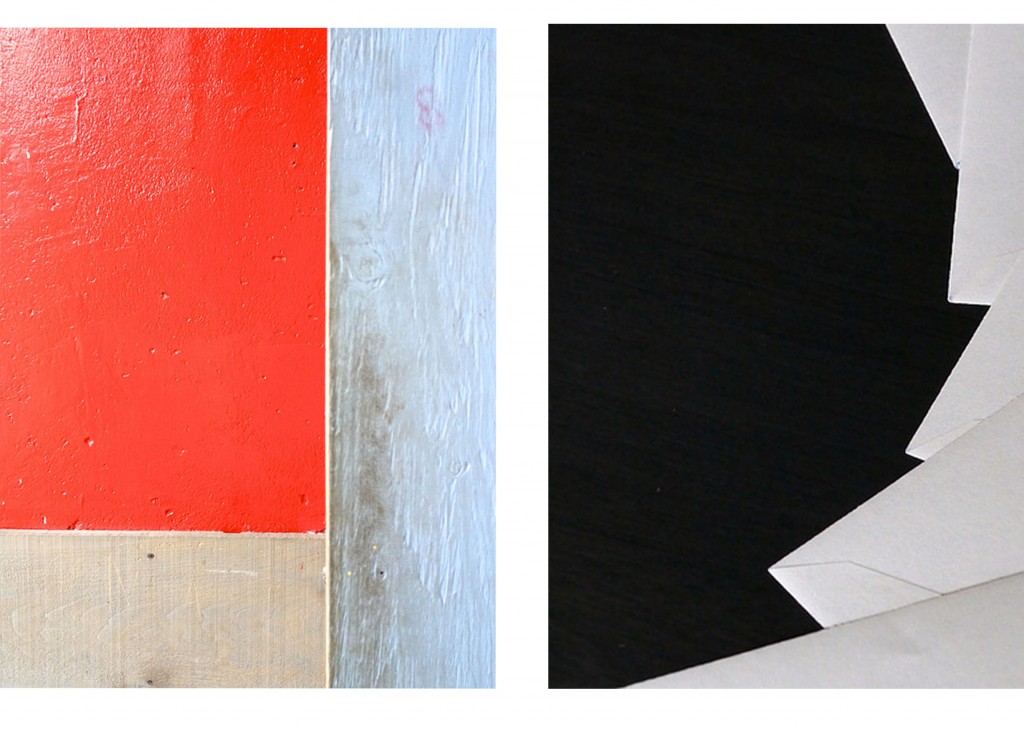
Color Blocks on a Wall / Envelopes on a Table
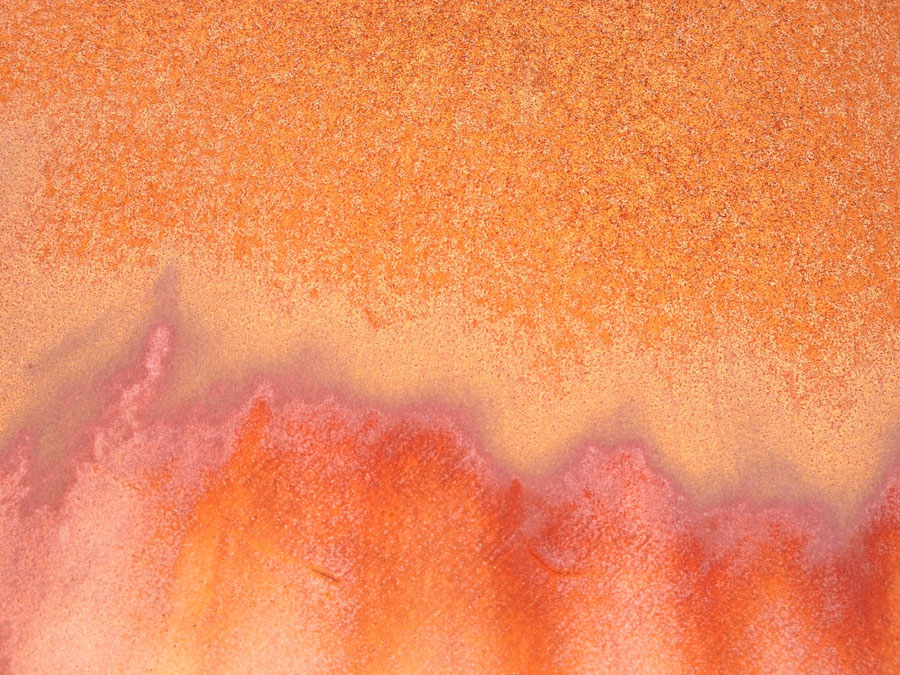
Back of Street Sign
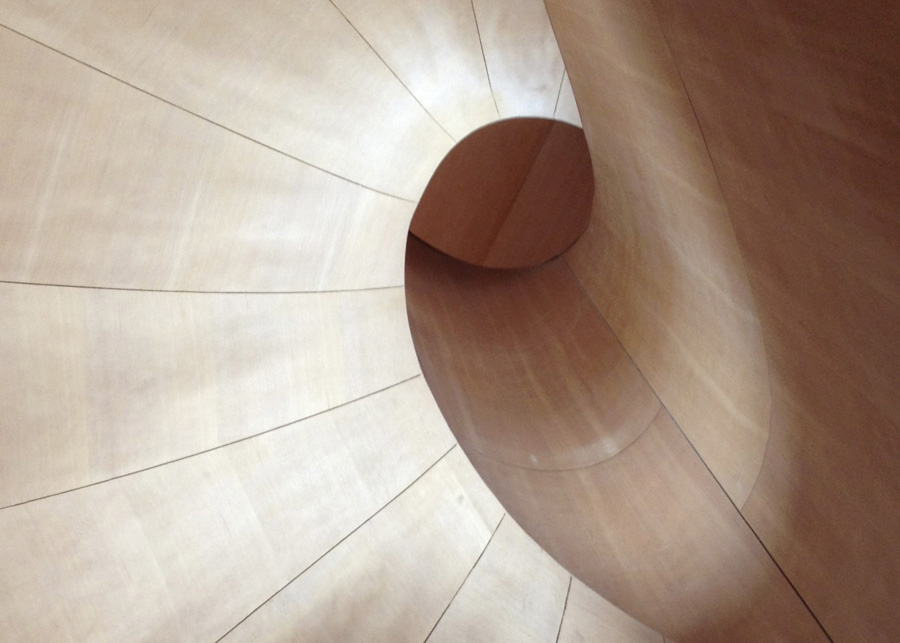
Spiral Staircase at Art Gallery of Ontario
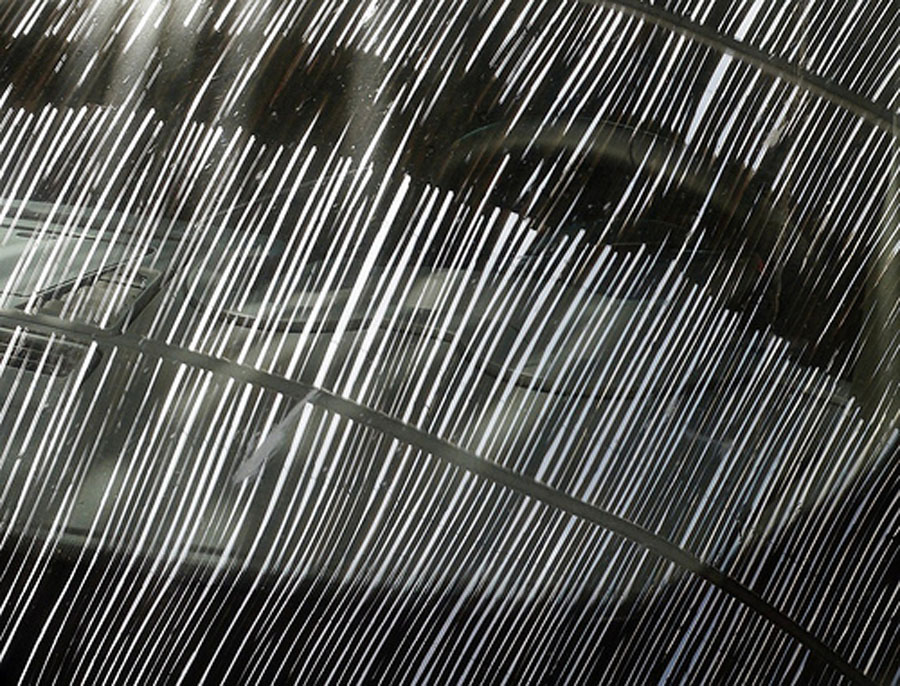
Reflection in Car Window
Why not give abstract photography a try?
More Resources
Brenda Gottsband is a master at abstractions from buildings. Take a look.
Abstract Photos Created by Repeating Everyday Household Items
Abstract Expression and Graffiti
Funny, my last post was about how I was drawn to textures on the beach when we went to the coast a few weeks ago. I think I am moving toward more abstract images. It is fun! I love your b&w of the envelopes, but my heart went to the spiral image — I am always attracted to those curvy lines. 🙂
Interesting, Gina. I think once we start seeing lines and shapes and textures (instead of things), abstract becomes more attractive.
What a well-written piece – as always, I learn SO much from my visits here. You take the time to explain often difficult subjects in such a clear manner. And thanks so much for the shout-out to my blog – appreciate it! Now I have a better conceptual explanation for what it is that I do 🙂
Thank you, Brenda. Your abstract images always make me go ahhhhh. I’m wondering what you’re feeling when you’re taking them.
Lovely abstracts! I actually like the back of the street sign very much! I like abstracts too and they often appear to us in the most ordinary of places – we just need to learn to actually see them!
Yes! And, it’s easy to learn once we start looking.
I’ve discovered a love of abstract photography. There’s something very appealing about an image where distractions are stripped away and colour, light, shape or other elements become the focus. Letting go of labels is something I’ve taken away from your teaching and blogging, and I think it’s a powerful lesson, one that invites us to experiment and explore beyond our usual limits. The results can be surprising and, as you say here, it’s fun too!
I’m glad you’re enjoying it too, Indigo. A powerful lesson to look beyond the surface.
Great post and subject Kim! In my school years I was not a big fan of abstract art. This has been changed over the years. It is so true, it can expand our perspective. I love that without identifying what is the object can bring out so much emotions. If I have to pick one, I like the the “Back of street sign”. It looks like watercolor on the paper, my favorite medium that I use for paintings.
Two of my favorite painters, Lawren Harris and Kandinksy, gradually got more and more abstract as they strove to purify their work. I am definitely drawn to abstract photography, Patterson’s, yours and Brendas, just as some examples. I sometimes try it and I plan to more in the future.
I definitely will give this a try. Sometimes I already do. Still loving my 50mm lens.
WHen I first really ‘getting into’ photography as an adult, it was exactly these things that appealed to me. They still do but I got away from concentrating on the abstract; instead tend to focus on it more when I’m seeking something unique or to jazz up my inspiration. I too have been inspired by Freeman Patterson and have recently uploaded a few on my Flickr acct. It’s great to see such great examples and a post on the topic too!
Nice to see you here, Diane. You have a wonderfully warm onli e journal.